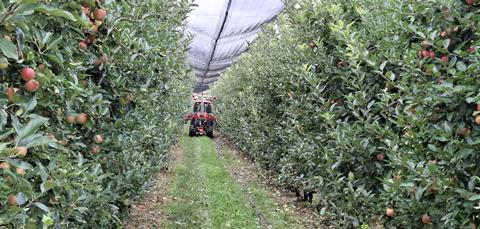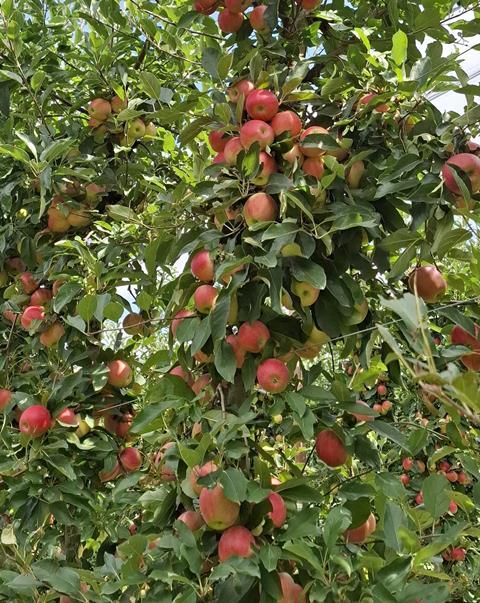Serbian apple producers were hit by plunging temperatures in the spring, but Gojko Zagorac of Serbia Does Apples sees opportunities for the country’s smaller crop

Annually, the Balkan region exports just over 300,000 tonnes of fresh apples, with Serbia responsible for around half that. But this year was marked by two significant frost events – the first in March, reaching -9C in Serbia, followed by another in April, with temperatures falling below 0C – with orchards in eastern Banat and along the Danube bearing the brunt.
“We predict total apple production in Serbia will be around 20-25 per cent lower compared to last year, which already had reduced yields compared to previous seasons,” says Gojko Zagorac, president of the Serbia Does Apples association and commercial director of producer Ćirić Agro. “We can currently count on a total crop of approximately 240-250,000 tonnes.”
Beyond reduced quantities, frost damage has also affected fruit quality in impacted areas, with smaller fruit sizes in Gala and oversized fruit in Granny Smith. However, the remainder of the growing season proved excellent, with fewer heat waves than 2024 but sufficient sunshine for good fruit colouration.
“The second week of August saw most of our growers begin harvesting early varieties, mainly Gala,” says Zagorac. “This represents the usual harvest start for our region, unlike 2024 when harvesting began two weeks earlier.
Serbian evolution
Serbia’s apple production has undergone a dramatic transformation over the past decade. The country previously produced nearly 500,000 tonnes annually, a figure that is now significantly reduced.

“The trend is indeed declining, with multiple contributing factors,” Zagorac explains. “Most significantly, older traditional orchards dominated by heritage varieties like Idared and Golden Delicious have been cleared. The disruption of trade flows with the Russian Federation, which had been the main export market for Serbian apples over the past two decades, has also had a major impact.”
The war in Ukraine has left lasting consequences, compounded by significant increases in input costs for fertilisers and energy. Data shows entire orchards have been cleared in previously productive regions in northern Serbia.
Despite these challenges, Ćirić Agro maintains modern orchards, follows the trends and invests significantly in production and quality. “Companies like ours can reduce risks and almost completely control apple yield and quality,” says Zagorac. “This season alone, we’ve used anti-frost systems multiple times, and irrigation with appropriate nutrition during dry periods is standard practice.”
Market development
Today’s leading export varieties from Serbia include Gala, Granny Smith, Red and Golden Delicious, and sporadic Braeburn production. New plantings show an increasing trend toward Gala varieties. Only a few Serbian companies, such as Delta Agrar, produce club varieties, including Pink Lady, Modi, Evelina and Crimson Snow.
“The variety portfolio of leading Serbian export companies is adapted to meet demands across all major markets – from the EU through GCC countries, the Russian Federation, to Far Eastern countries,” Zagorac notes.
Export data reveals significant market shifts. Russian Federation imports, while recovering from 2023 lows, remain well below historical levels at €42mn in 2024 compared to €69mn in 2022. Meanwhile, the Middle East market has shown steady growth, reaching €27mn in 2024.
Notable growth areas include the UK (€8mn in 2024 versus €4mn in 2022), Spain and Portugal (growing from zero to €5mn), and regional Balkan markets (€12mn in 2024 compared to €3mn in 2022). These diversification efforts demonstrate the Serbian industry’s continuing adaptation to changing geopolitical realities.
“We also expect the gradual opening of North African markets for Serbian apples,” says Zagorac, “especially following the Egypt-Serbia Free Trade Agreement.”



